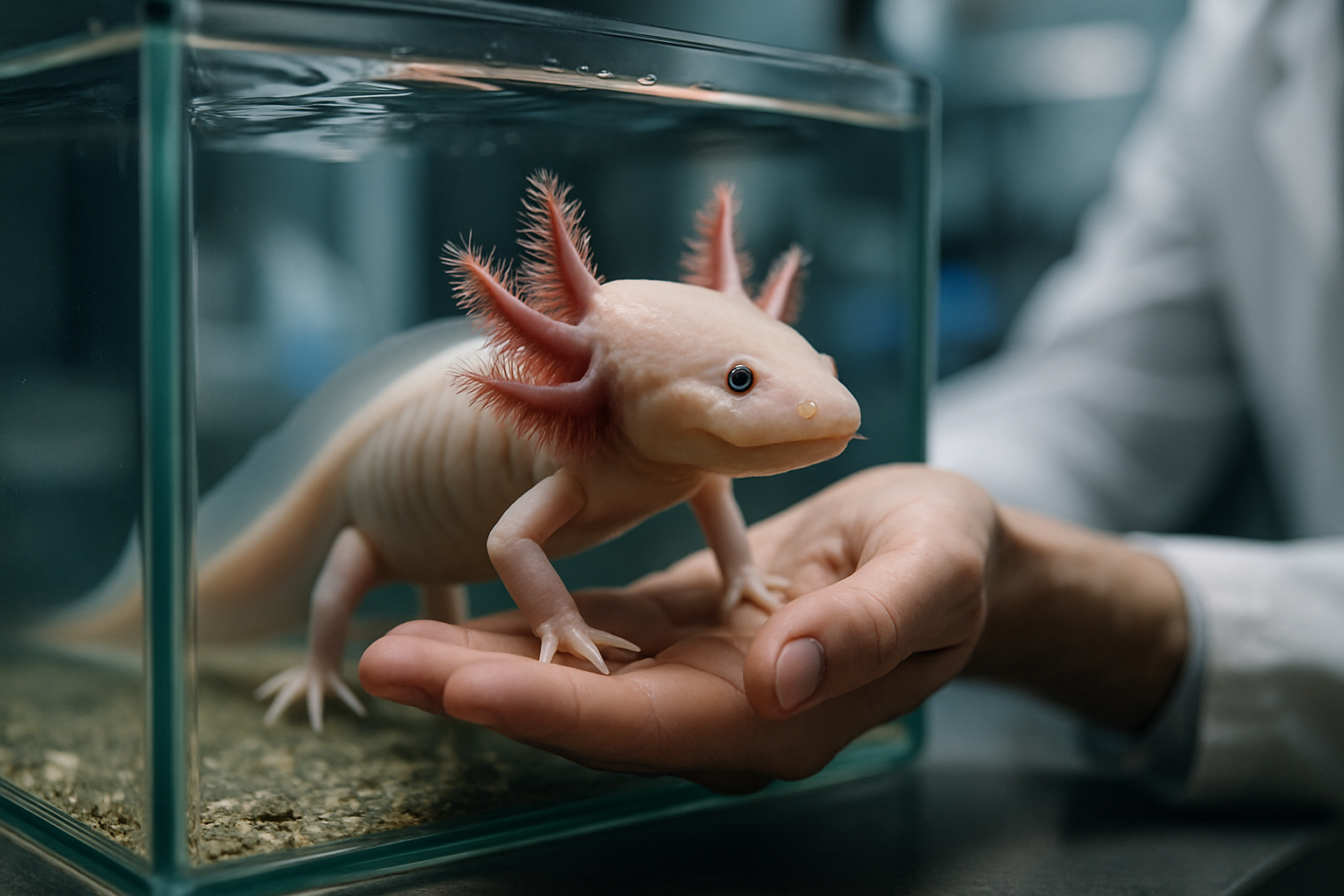The Enigmatic World of Axolotls: Nature's Eternal Youths
Dive into the captivating realm of axolotls, the remarkable amphibians that seem to defy aging. These fascinating creatures, with their perpetual smiles and extraordinary regenerative abilities, have captivated scientists and pet enthusiasts alike. From their unique evolutionary path to their potential implications for human medicine, axolotls continue to surprise and inspire us with their incredible adaptations.

The Axolotl’s Evolutionary Journey
The axolotl’s story begins millions of years ago in the lakes and canals of what is now Mexico City. Unlike most salamanders that metamorphose into land-dwelling adults, axolotls evolved to retain their juvenile aquatic features throughout their lives, a phenomenon known as neoteny. This adaptation allowed them to thrive in their watery habitat, developing unique characteristics that set them apart from their terrestrial cousins.
Regenerative Marvels: The Science Behind Axolotl Healing
Perhaps the most extraordinary feature of axolotls is their ability to regenerate lost body parts, including limbs, organs, and even portions of their brain. This remarkable capability has made them invaluable in the field of regenerative medicine. Scientists have discovered that axolotls can regrow entire limbs in a matter of months, complete with bones, muscles, and nerves. This process is facilitated by their ability to dedifferentiate cells at the site of injury, essentially turning back the clock on cellular development.
Axolotls in Research: Paving the Way for Medical Breakthroughs
The implications of axolotl regeneration for human medicine are profound. Researchers are studying these amphibians to understand how their regenerative abilities might be applied to treat human conditions, from spinal cord injuries to heart disease. The axolotl genome, which was fully sequenced in 2018, has provided valuable insights into the genetic mechanisms behind tissue regeneration. This knowledge could potentially lead to groundbreaking therapies for a wide range of injuries and degenerative diseases in humans.
Conservation Challenges: Protecting a Species on the Brink
Despite their importance to science and their popularity as pets, wild axolotls face a dire situation in their native habitat. The rapid urbanization of Mexico City has led to severe pollution and habitat loss in the canals where axolotls once thrived. Current estimates suggest that fewer than 1,000 wild axolotls remain in their natural habitat, making them critically endangered. Conservation efforts are underway to protect and restore the axolotl’s native ecosystem, but the challenges are significant.
The Rise of Axolotls as Exotic Pets
In recent years, axolotls have gained popularity as exotic pets, thanks to their unique appearance and relatively low maintenance requirements. However, this trend has raised concerns about the ethics of keeping these endangered creatures in captivity. Responsible axolotl ownership requires a thorough understanding of their specific care needs, including water quality management, appropriate diet, and temperature control. The cost of setting up a proper axolotl habitat can range from $200 to $500, with ongoing maintenance expenses to consider.
Axolotl Colors: A Palette of Genetic Diversity
One of the most visually striking aspects of axolotls is their wide range of colors and patterns. While wild axolotls are typically a mottled brown or black, captive breeding has produced a variety of vibrant morphs. These include leucistic (white with pink gills), albino (white with red gills), golden albino, and even piebald varieties. The genetics behind these color variations are complex and continue to be a subject of study among breeders and researchers alike.
The Axolotl’s Place in Aztec Mythology
The cultural significance of axolotls extends beyond their scientific importance. In Aztec mythology, these creatures were associated with the god Xolotl, the deity of fire and lightning. The name axolotl itself is derived from the Nahuatl words atl (water) and xolotl (monster), reflecting their aquatic nature and unusual appearance. This rich cultural heritage adds another layer of fascination to these already remarkable animals.
Future Prospects: The Axolotl’s Role in Advancing Science
As research into axolotl biology continues, scientists are uncovering new potential applications for their unique abilities. Recent studies have explored the possibility of using axolotl-derived compounds in wound healing treatments and tissue engineering. The axolotl’s ability to resist cancer has also piqued the interest of oncology researchers, potentially opening new avenues for cancer prevention and treatment.
In conclusion, the axolotl stands as a testament to the wonders of nature and the potential for scientific discovery. From their remarkable regenerative abilities to their precarious status in the wild, these smiling salamanders continue to captivate and inspire. As we work to protect their natural habitats and unlock the secrets of their biology, axolotls remind us of the intricate connections between conservation, scientific advancement, and the preservation of Earth’s unique and irreplaceable biodiversity.





